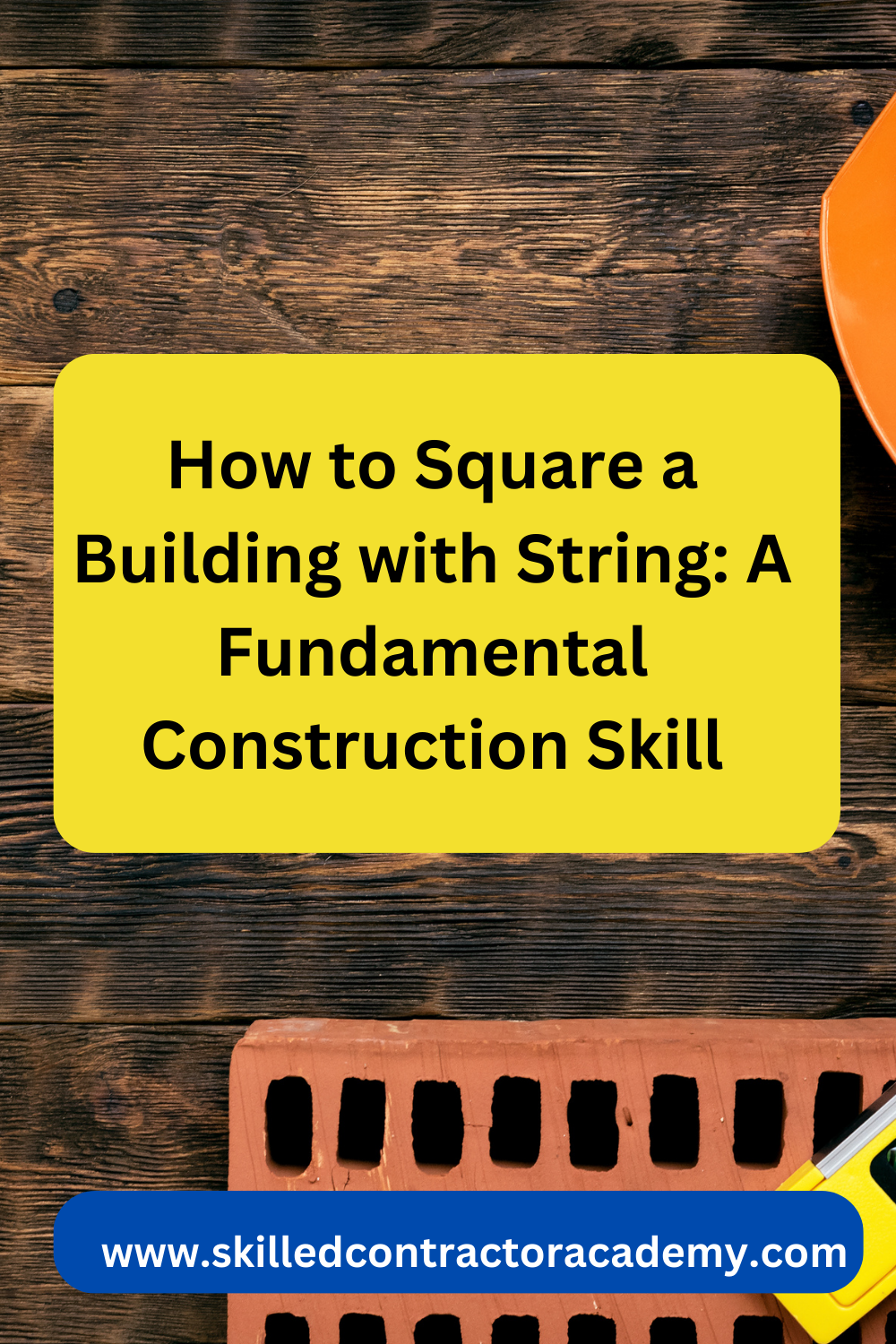Hello, fellow DIY builders and construction enthusiasts! Today, we’re diving into a foundational construction skill that’s essential for ensuring the accuracy and integrity of your building project: squaring a building with string. Whether you’re constructing a new home, a shed, or any structure, getting the corners perfectly square is crucial for a solid foundation and a professional finish.
In this step-by-step guide, we’ll walk you through the process of squaring a building using nothing more than a few basic tools and a length of string. It’s a technique that has been employed by builders for generations, and by the end of this article, you’ll have the knowledge to square your project like a pro.
Why Square Matters
Before we jump into the “how,” let’s quickly cover the “why.” Why is it so important to square your building correctly?
1. Structural Integrity: A properly squared building ensures that all corners and angles are true. This structural integrity is essential for the long-term stability of the structure.
2. Professional Finish: Squaring your building ensures that walls meet at perfect right angles, leading to a professional and aesthetically pleasing finish.
3. Accurate Measurements: Square corners make measuring and cutting materials like drywall, flooring, and tiles much more straightforward, reducing waste and saving you time and money.
Now, let’s get down to the nitty-gritty of squaring your building with string.
Tools You’ll Need
To get started, gather the following tools:
- String: A strong, non-stretch string or twine.
- Tape Measure: For accurate measurements.
- Stakes or Pegs: To mark the corners.
- Level: To ensure level lines.
- Square: A framing square or carpenter’s square for checking right angles.
- Assistant: An extra pair of hands can be extremely helpful.
Step 1: Establish Your Reference Line
Start by selecting a reference point along one side of your building site. This will be your baseline for creating a square corner. Measure and mark the desired length along this reference line, ensuring it’s longer than the width of your building.
Step 2: Create a Right Angle
From the endpoint of your reference line, measure out a multiple of 3 feet along one of the adjacent sides. For example, if you marked 12 feet along the reference line, measure and mark 9 feet along the adjacent line. This creates a 3:4:5 right triangle, a classic method for ensuring a right angle.
Step 3: Secure the String
Attach one end of your string to the starting point on your reference line. This will be the corner of your building.
Step 4: Use the 3:4:5 Method
With your assistant, pull the string taut along the 9-foot mark on the adjacent side and the 12-foot mark on the reference line. Make sure the string is level.
Step 5: Mark the Corner
When the string is perfectly level and taut, mark the point where it intersects with the adjacent side. This is your first corner.
Step 6: Repeat for Other Corners
Now, repeat the process for the remaining corners of your building. Use the same 3:4:5 method to ensure that all corners are square.
Step 7: Check for Accuracy
Once all corners are marked, use your square to check that the angles are indeed 90 degrees at each corner. Make any necessary adjustments by slightly moving the string or stakes.
Step 8: Double-Check Measurements
Finally, double-check your measurements to ensure that the diagonals from corner to corner are equal. When both diagonals match, you have a perfectly squared building.
Congratulations! You’ve successfully squared your building with string. You can now confidently proceed with your construction project, knowing that your foundation is solid, your corners are true, and your measurements are accurate.
In conclusion, squaring a building with string is a fundamental construction skill that every builder should master. It’s a simple yet essential technique that ensures the structural integrity and professional finish of your project. With the right tools and careful attention to detail, you can square your building like a pro. Happy building!
